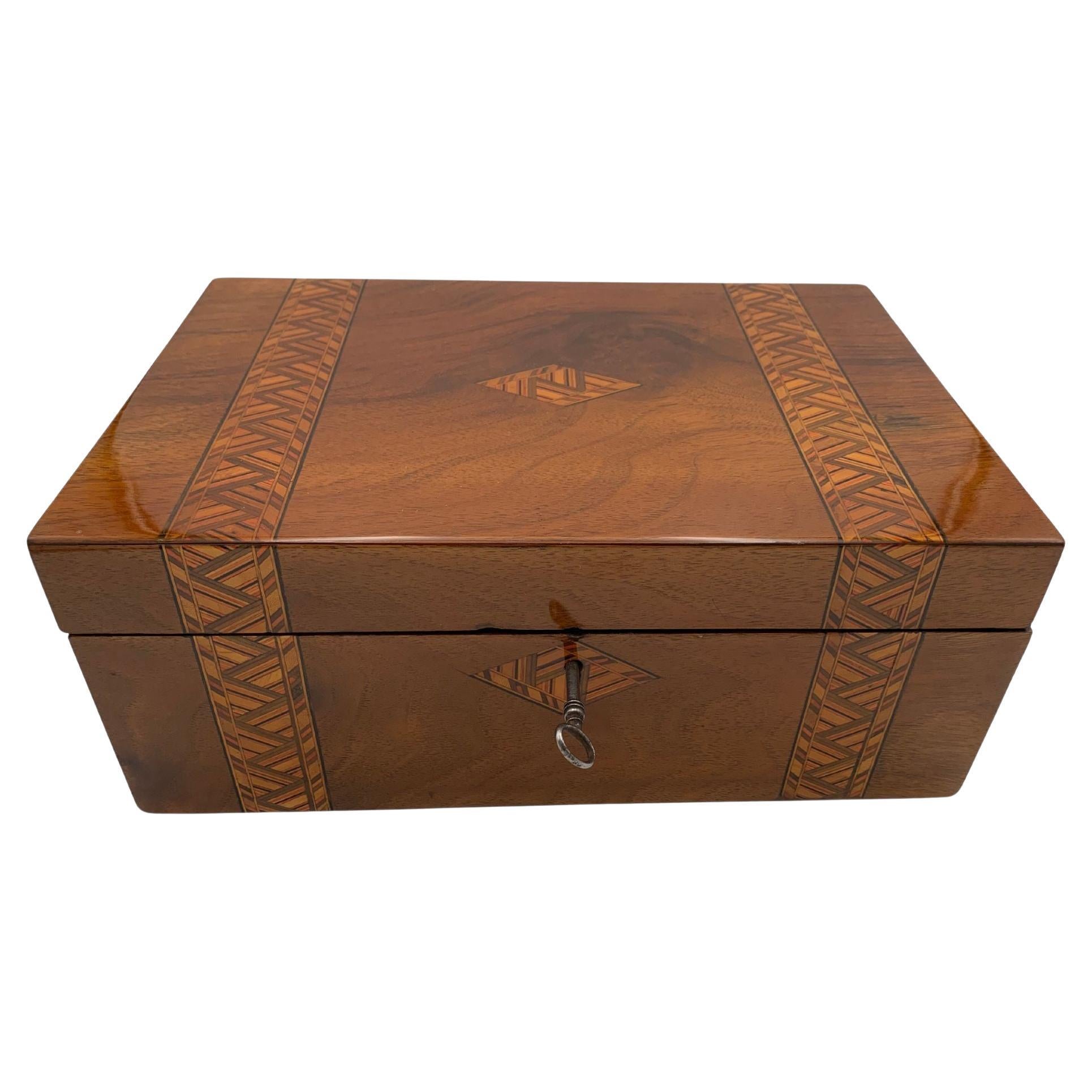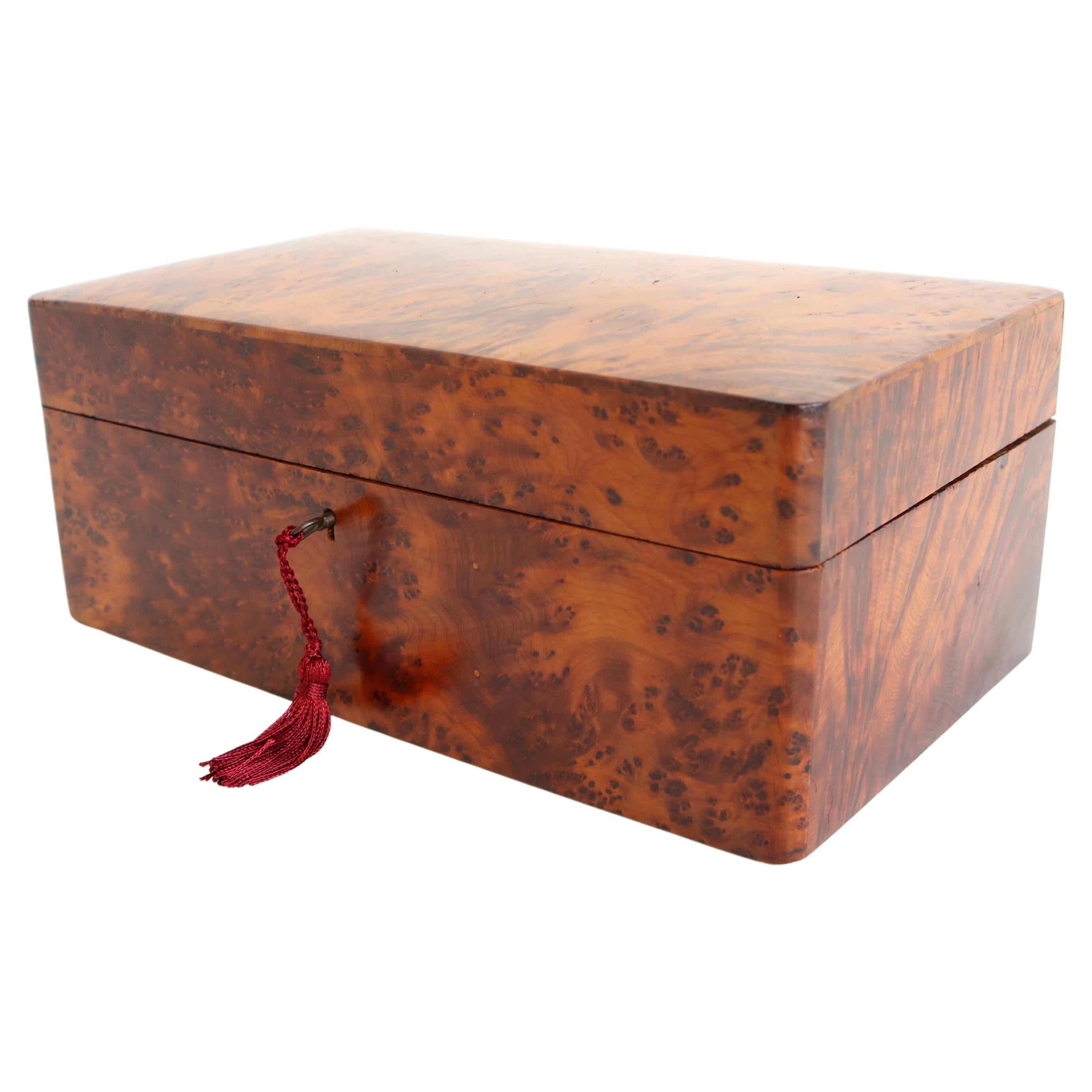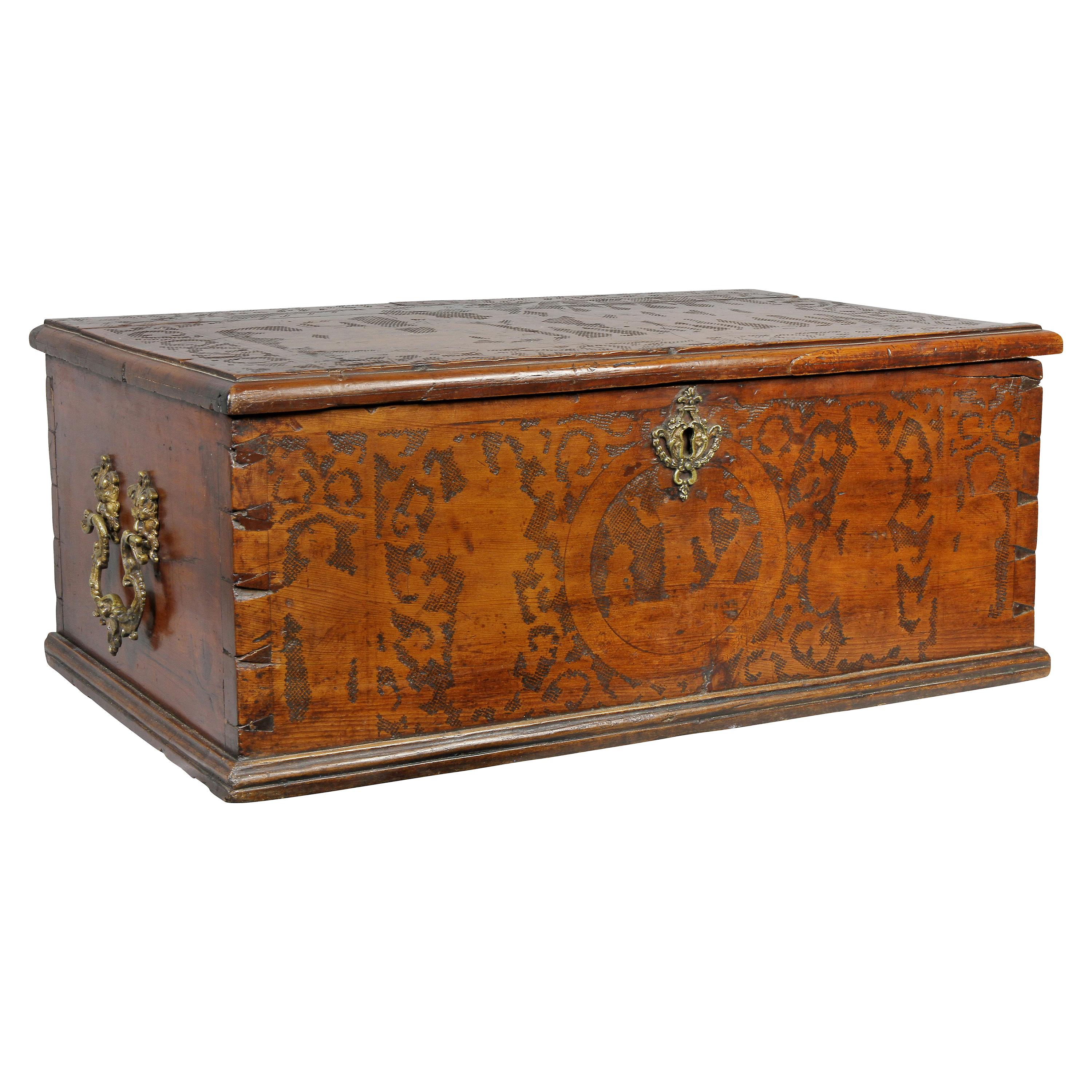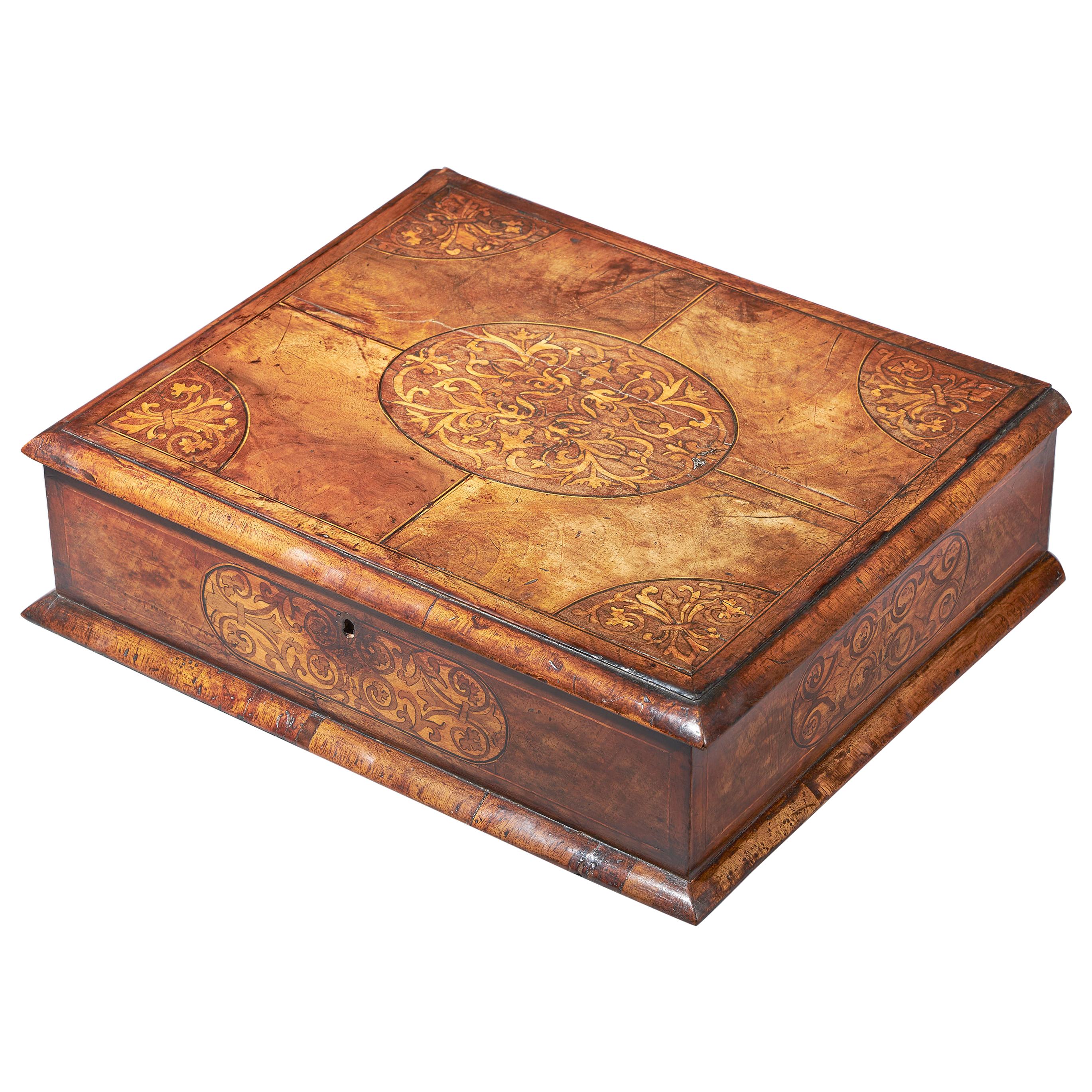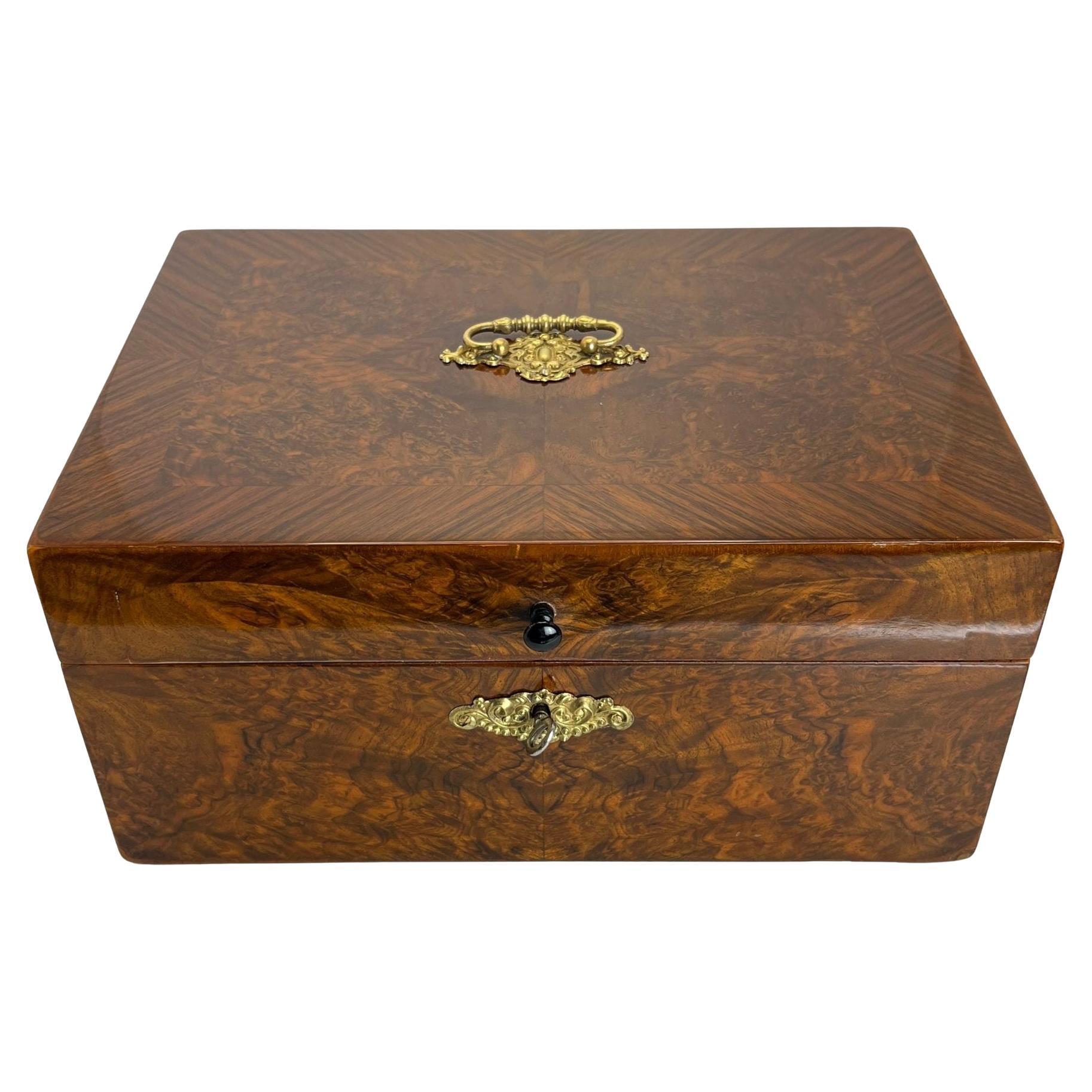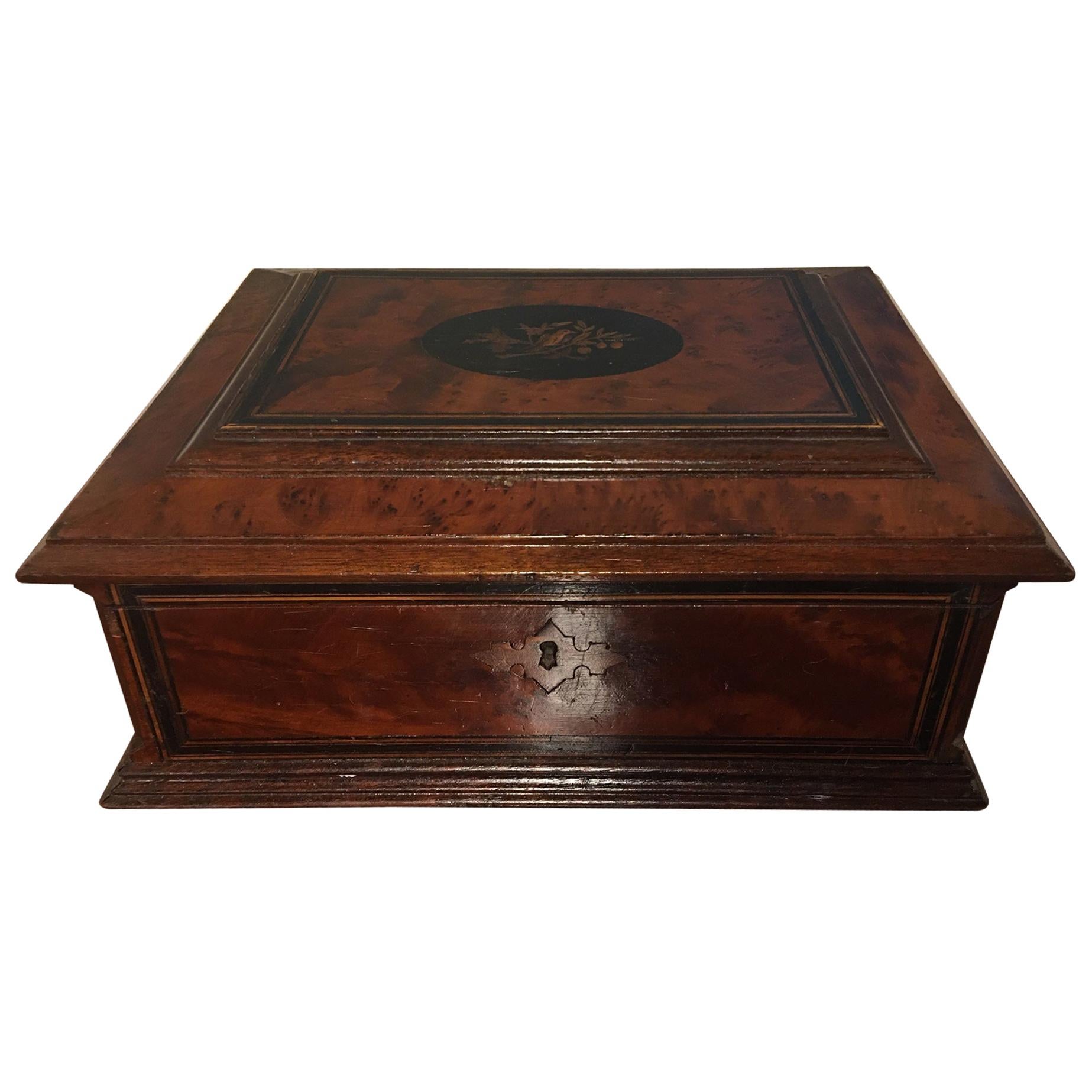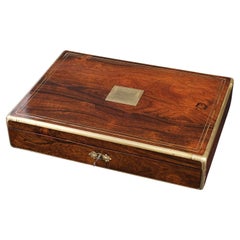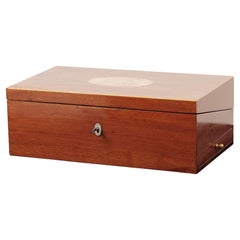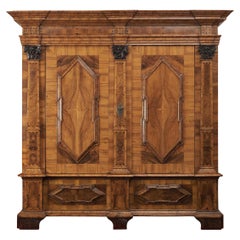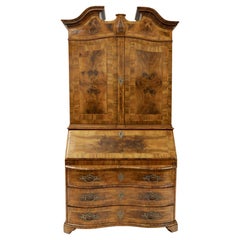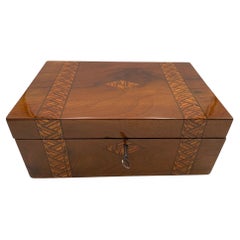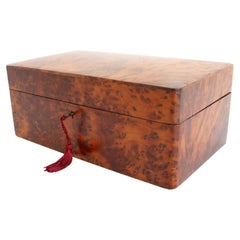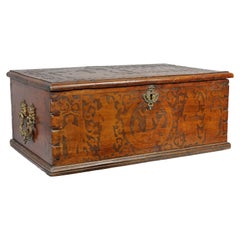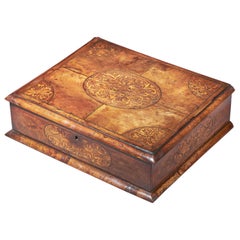Items Similar to Baroque Casket, around 1760, birch burl and walnut
Want more images or videos?
Request additional images or videos from the seller
1 of 9
Baroque Casket, around 1760, birch burl and walnut
$1,965.80
£1,460.45
€1,650
CA$2,725.67
A$2,931.23
CHF 1,567.33
MX$35,349.76
NOK 19,819.99
SEK 18,058.56
DKK 12,575.74
About the Item
Casket
Baroque, around 1760, birch burl and walnut, round lid with folding star inlay and pewter thread inlays, original lock and fittings, shellac hand polish
Dimensions:
Height: 14 cm
Width: 26 cm
Depth: 20 cm
Most pieces of furniture from the Baroque era date from the period between 1670 and around 1750. Starting with strict but pompous forms, Baroque furniture developed into playful pieces of furniture with numerous curves and magnificent fittings by the middle of the 18th century. Baroque chests of drawers mostly date from the period between 1720 and 1750 and feature multiple curved fronts and veneer marquetry. Baroque tables and chairs feature lavishly curved legs, the lower ends of which end in volutes or animal hooves. Towards the end of the Baroque period and the Rococo period, the curved legs of tables and chairs merge into the frames in a single sweep. Baroque cabinets are usually disproportionately large by today's living standards, as they originally stood in castles. Heights of 2.40 to 2.60 meters are not uncommon for baroque cabinets.
In early Baroque furniture, the architectural structure becomes increasingly less important. Ornamental forms such as the auricle and cartilage ornament appear. Starting in Nuremberg, wave and flame moldings became increasingly important in Baroque furniture. These decorate columns, pilaster strips and are used as framing. From the middle of the 17th century onwards, twisted columns (corkscrew columns) were used in addition to the classic column arrangements. The twisted columns first appeared as a turned element in Baroque furniture. From around 1700 onwards, starting in southern Holland, flower marquetry became increasingly common.
After the middle of the 17th century, flower tendrils, flower and fruit hangings became increasingly popular. Starting in Italy, acanthus decorations on Baroque furniture became fashionable in the late 17th century. At the same time, the doubling of cushion and coffered fillings came from the north. This led to the development of bastion fillings and large medallion surfaces.
From 1720 onwards, we see an increasing dissolution of the strict geometric forms and the front edges of the carcase are increasingly beveled. The surfaces are decorated with marquetry made from scrollwork, rocailles and chinoiserie. From the middle of the 18th century, parquet marquetry became increasingly important and Baroque furniture took on a more private character. Courtly Baroque furniture was covered with walnut marquetry - often combined with exotic woods such as boxwood, plum, amaranth, mahogany and various types of rosewood. Non-wood materials such as brass, pewter, silver, copper, ivory, mother-of-pearl, tortoiseshell and horn were very popular and were often also engraved. Both rural and bourgeois Baroque furniture was predominantly made from solid softwood or oak, occasionally also from solid walnut.
Baroque furniture is a sustainable piece of furniture. The wood was felled over 200 years ago without the use of machines and pulled out of the forest by horses. The tree trunks were sawn by hand or with gang saws (using water power) and stored in the fresh air for several years. Exotic woods from overseas were also brought to Europe on sailing ships. The production was done entirely by hand and only natural materials (glues and natural resins) were used, which we still use today for restoration.
- Dimensions:Height: 5.52 in (14 cm)Width: 10.24 in (26 cm)Depth: 7.88 in (20 cm)
- Style:Baroque (Of the Period)
- Materials and Techniques:
- Place of Origin:
- Period:
- Date of Manufacture:1760s
- Condition:Refinished. Wear consistent with age and use.
- Seller Location:Münster, DE
- Reference Number:1stDibs: LU9172242226672
About the Seller
5.0
Recognized Seller
These prestigious sellers are industry leaders and represent the highest echelon for item quality and design.
Established in 2000
1stDibs seller since 2023
6 sales on 1stDibs
- ShippingRetrieving quote...Shipping from: Münster, Germany
- Return Policy
More From This Seller
View All19th Century French Playing Card Box Rosewood
Located in Münster, DE
Large casket, rosewood solid and veneered, France circa 1860/70, brass handle embedded in the lid, brass inlays, nice division inside (originally for tokens and cards), restored cond...
Category
Antique 1860s French Empire Decorative Boxes
Materials
Brass
Early 19th Century Georgian English Travel Writing Box Mahogany
Located in Münster, DE
Writing box, mahogany, England, around 1830, writing surface with leather overlay, nice interior division
Large writing box / travel writing desk
E...
Category
Antique Early 19th Century English Georgian Decorative Boxes
Materials
Brass
Baroque Hall Cupboard 1770/80 Walnut and Walnut Burl
Located in Münster, DE
Important hall cabinet from around 1770/1780
Walnut, walnut burl and other precious woods veneered on softwood, two-door body divided by three pilasters, doors with octagonal carto...
Category
Antique 1780s German Baroque Cupboards
Materials
Oak, Walnut, Burl
Walnut and walnut burl Baroque Secretary à deux corps Saxony around 1760
Located in Münster, DE
Secretary à deux corps
Baroque, Saxony c. 1740, walnut and walnut burl veneer, sloping lid, 2-door top with sprung gable and beautiful interior division, 3-tier, double-arched chest...
Category
Antique 1760s German Baroque Secretaires
Materials
Wood, Nutwood
Top cabinet secretary, Baden, around 1780/90 Walnut and walnut burl
Located in Münster, DE
Secretary à deux corps
Top cabinet Baden, around 1780/90
Walnut and walnut burl veneered and marquetry,
3-tier chest of drawers, cylinder lock with automatic pull-out mechanism, o...
Category
Antique 1780s German Empire Secretaires
Materials
Wood, Nutwood
$15,059 Sale Price
20% Off
Gothic front gallery chest, Westphalia around 1500 - 1550, oak
Located in Münster, DE
Gothic front gallery chest, Westphalia around 1500 - 1550, wrought iron bands, boxy oak body, partially carved. Monumental star-shaped key plate with original key, feet on the front ...
Category
Antique 16th Century German Gothic Blanket Chests
Materials
Oak
$15,726 Sale Price
20% Off
You May Also Like
Antique Writing Box, Walnut with Inlays, England, Late 19th Century
Located in Regensburg, DE
Beautiful antique writing box from the historicism / Victorian style from England, 2nd half of the 19th century.
Walnut veneered inlaid with various colored woods. Can be opened ...
Category
Antique Late 19th Century German Victorian Decorative Boxes
Materials
Walnut
Marvelous 19th Century French Antique Jewelry Box Napoleon III in Burl Wood
Located in Ijzendijke, NL
Marvelous Napoleon III 19th century antique Jewelry box in Burl wood from France.
Impressive wood grain with slight curved edge on t...
Category
Antique Late 19th Century French Napoleon III Jewelry Boxes
Materials
Wood, Burl
Italian Baroque Walnut Box
Located in Essex, MA
Hinged top, decorated overall with incised carving, lock plate and side handles.
Category
Antique 1670s Italian Baroque Decorative Boxes
Materials
Walnut
17th Century Figured Walnut and Seaweed Marquetry Lace Box
Located in Oxfordshire, United Kingdom
A fine and extremely rare figured walnut and seaweed marquetry 'lace box', circa.... let’s break it down - Seaweed marquetry first appeared in Englis...
Category
Antique 17th Century English Baroque Decorative Boxes
Materials
Walnut
Late Biedermeier Box, Walnut and Walnut Burl, Austria circa 1850
Located in Regensburg, DE
Large late Biedermeier box in walnut, hand-made in Austria around 1850.
* Veneered in walnut and walnut burl on thick (2.2 cm / 0.87 in) stained beechwood inside.
* Interior lined wi...
Category
Antique 1850s Austrian Biedermeier Decorative Boxes
Materials
Brass
French Burl Walnut and Decorative Inlay Jewelry Box, 19th Century
Located in Savannah, GA
French burl walnut and inlay jewelry box, 19th century. Decorative inlay with a bird and flowers design.
Category
Antique 19th Century French Jewelry Boxes
Materials
Burl
More Ways To Browse
Mother Of Pearl Jewlery Box
Antique Parquet
Star Inlay
Pilaster Columns
Antique Corkscrews
18th Century Italian Walnut Chair
Rosewood Mother Of Pearl Inlay
Burl Wood And Resin Tables
Pewter Inlay
Antique Marquetry Chair
17th Century Italian Walnut Chairs
Rosewood Mother Of Pearl Table
Baroque Casket
Burl Veneer Box
Used Horse Trunks
Oval Antique Jewelry Box
Antique Jewelry Safe
Denmark Bronze Box
